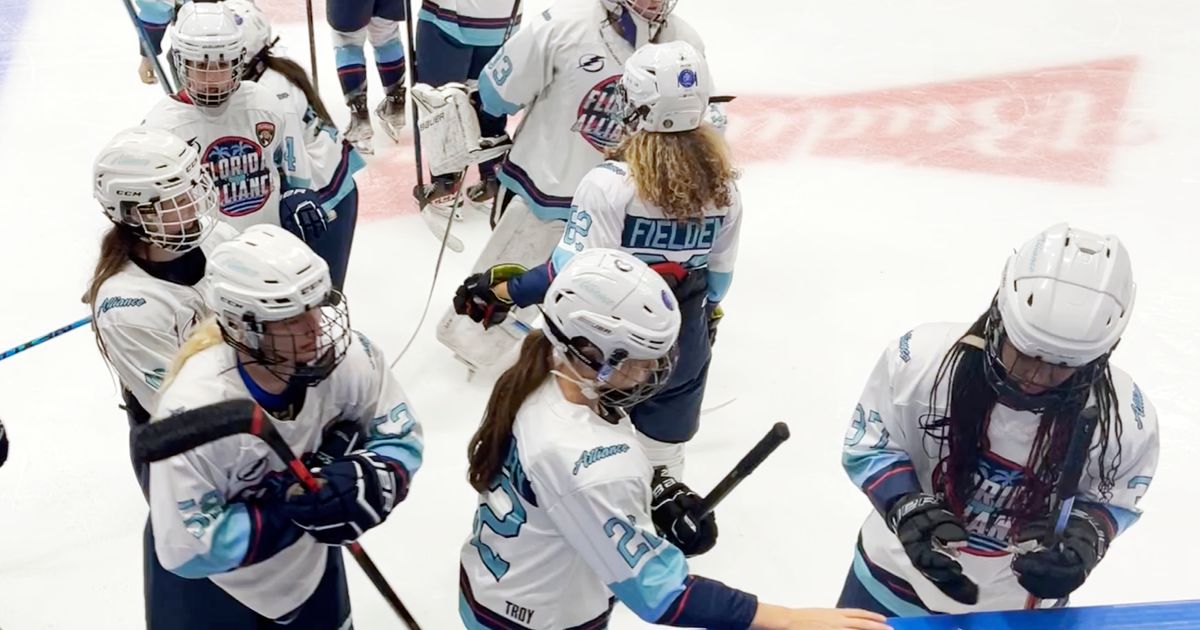
QUEBEC CITY (AP) — The autograph session over and her Olympic medal safely packed away, Charline Labonte acknowledged feeling a pang of jealousy during her latest visit to the International Peewee Hockey Tournament, where she played in net on a boys team in the early 1990s.
The three-time Canadian gold medalist, who also appeared in 28 games for Quebec Major Junior Hockey League’s Acadie-Bathurst, wouldn’t change a thing about her past nor the challenges she and her trailblazing female contemporaries overcame in pursuing their dreams to play hockey.
And yet, the 40-year-old experienced a sense of wonder in looking around Quebec City’s Videotron Centre, seeing collections of girls wearing their team uniforms in the hallways, stands and, most importantly, on the ice.
“I wish I would have had those opportunities when I was younger,” Labonte said over the weekend. “To have the opportunity for young girls to compete against other girls, it shows that women’s hockey has grown so much over years ago. I think this is very exciting for them.”
Though the 63-year-old tournament has been open to girls competing on boys teams or as all-girl teams in boys divisions, this year’s 11-day event was distinctly different: It launched its first girls peewee division, made up of 12 teams representing Canada, the United States, Switzerland, England and France. The three U.S.-based teams are from Connecticut, North Carolina and Florida.
“The demand was there. So we said, ‘Now it’s time to stop celebrating the girls/women’s hockey once every four years. Now it’s time to celebrate every year,’” tournament general manager Patrick Dom said, referring to the four-year Olympic cycle. “It was time.”
Because the tournament places an emphasis on international competition, the continued growth of girls hockey outside of North America was the tipping point. The 2022 Beijing Winter Games featured 10 nations, up from eight in 2018 and six when the sport was first introduced in 1998. There’s also been a steady rise in the number of women’s pro leagues on both sides of the Atlantic.
Twelve teams competed in Quebec City this year, and about 28 more were turned down, opening the possibility of the girls division expanding by four next year — even at the expense of reducing the number of boys teams.
“If you take four more girls teams, you’re going to get four more calls from the boys teams saying, ‘Hey, the girls are taking our place.’ Well, you know what, this is what it is,” Dom said. “Women’s hockey needs to play, and it needs to be in the tournament.”
The boys side features four divisions, and 108 teams, including the all-girl Etoiles Du Quebec, which opened the tournament with a 7-0 win over France’s Rouen Dragons in Class BB boys play Saturday.
The cover of the tournament program features a girl holding up a hockey stick. Janes, a Canadian-based frozen food company, has signed on as the girls’ division sponsor. On Sunday, the tournament dedicated its prime early-afternoon ice times to a four-game stretch of girls division action, which included a woman as the public-address announcer and one game featuring an all-women crew of officials.
Another priority was ensuring girls games were played in the NHL-sized Videotron Centre instead of a smaller, secondary rink.
“It was very important to make sure that they get invited in the big door as the boys … to make sure that they feel like they are not outsiders, but that they are part of it,” Dom said.
Florida Alliance girls coach Shawn Ray is no stranger to the tournament. His previous trips to Quebec City came coaching boys teams from Long Island, New York, whose members included Boston Bruins defenseman Charlie McAvoy and his daughter, who is now playing in college.
“Man, I wish my daughter was 12 years old again,” Ray said, noting she addressed his team by Facetime before its first game. “I don’t think people realize the effect that this is going to have on them until years down the road.”
Florida Alliance player Cheyenne Friesen already has an inkling.
“As soon as we stepped in here, everything was like so professional. So that’s when I realized how big of a deal it is to come here,” Friesen said. “I completely appreciate it. I think it’s really fun for all the girls, and it’s a fair game.”
England defender Grace Reilly was so in awe of having the opportunity to size up the competition in playing her first international game that a 6-0 loss to Florida Alliance didn’t bother her.
“This was our first proper game as a team, and I think from the start to the end, our team’s already improved massively,” Reilly said. “So by the end of this tournament, we’re going to be at another level. It’s crazy.”
Developing the game in England is important, but so are the experiences coach Josie Lamey said her players are enjoying.
“When they look back 20 years and say ‘I played in the first female tournament over here,’ it doesn’t matter that they lost six-nil in the first game,” Lamey said. “It’s about coming here and being involved and making memories forever.”
Former U.S. national team defender and two-time Olympian Megan Bozek competed on both girls and boys teams in Quebec City, and made it a point of returning last weekend.
“To have the 12 teams that have really pioneered this tournament, and to see where it grows in five to 10 years, is just incredible,” said Bozek, who addressed several girls teams. “To see girls get the same treatment, the same thing as boys, finally, finally. Yeah, it’s about time.”
___
AP sports: https://apnews.com/hub/apf-sports and https://twitter.com/AP_Sports